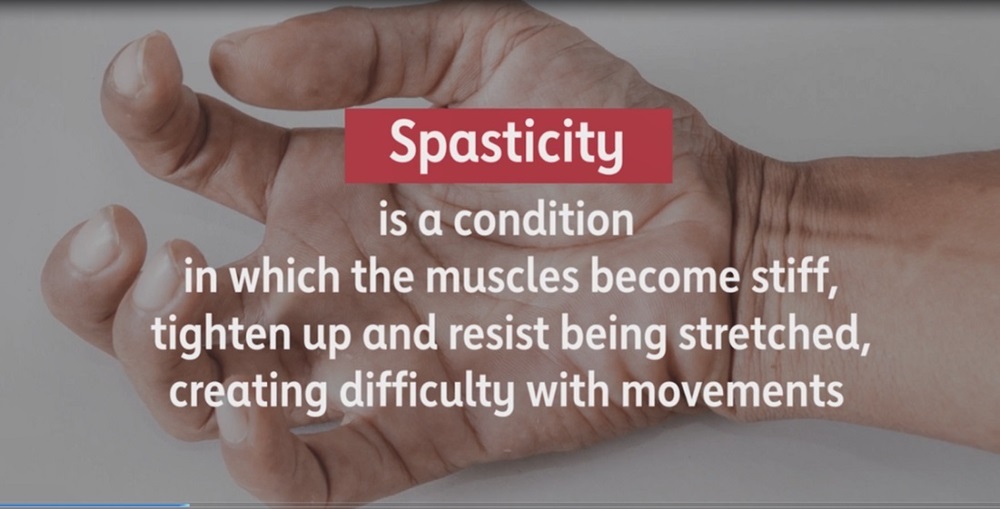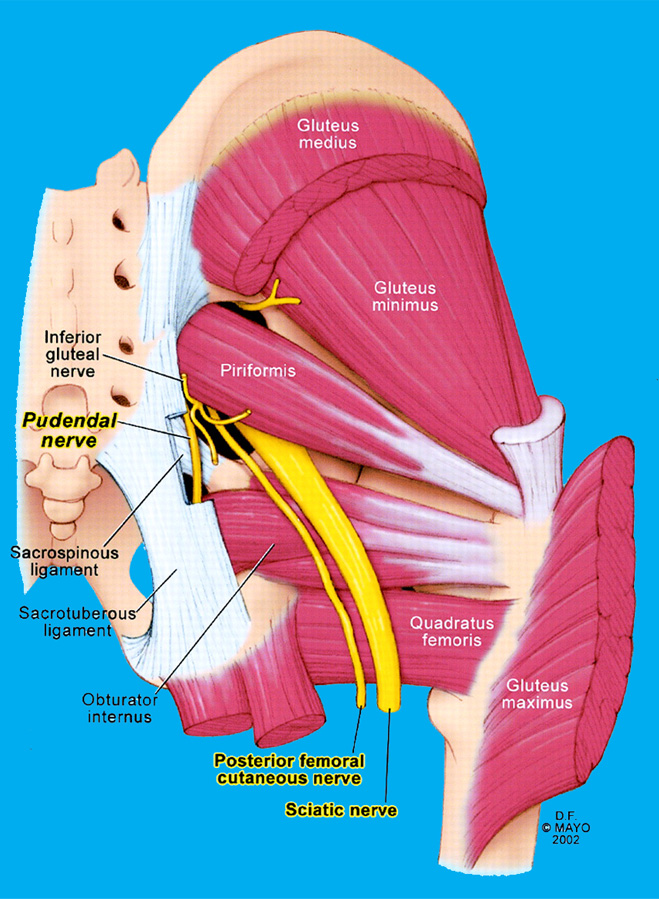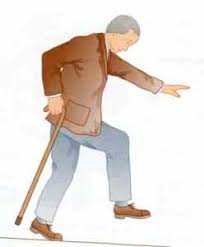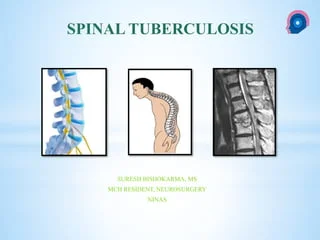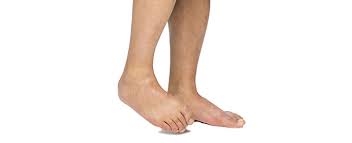SPASTICITY IN HAND
Table of Contents
Introduction :

- Arm and hand spasticity refers to uncontrolled and abrupt movements known as spasms that frequently occur in the arms or hands.
- The spasms are often accompanied by stiff arm muscles, as well as trouble with arm coordination or function
- Spasticity typically affects the muscles and joints in the extremities, making proper care and hygiene for affected hands vital to maintaining a patient’s well-being and comfort.
Causes:
- Spasticity is caused by an imbalance of signals from the central nervous system (brain and spinal cord) to the muscles.
- This imbalance is often found in people with cerebral palsy, traumatic brain injury, stroke, multiple sclerosis, and spinal cord injury.
Symptoms :
- Increased muscle tone
- Overactive reflexes
- Muscle stiffness, causing movements to be less precise and making certain tasks difficult to perform
- Muscle spasms, causing uncontrollable and often painful muscle contractions
- Involuntary crossing of the legs
- Muscle and joint deformities
- Muscle fatigue
- Difficulty with care and hygiene
- Abnormal posture
- Contractures
- Inhibition of longitudinal muscle growth
- Inhibition of protein synthesis in muscle cells
- Bone and joint deformities
Spasticity feel like:
- Symptoms of spasticity can vary from being mild stiffness or tightening of muscles to painful and uncontrollable spasms.
- Pain or tightness in joints is also common in spasticity.
Diagnosis :
Modified ashwarth scale examination :

| Scale | Description |
| 0 | No increase in tone |
| 1 | Slight increase in tone, Catch & release at end ROM |
| 1+ | Slight increase in tone, Catch & release and resistance through rest ROM ( 1/ 2 ROM ) |
| 2 | More marked increase in tone through ROM, but affected part moved easily |
| 3 | Considerable increase in tone, passive movement difficult |
| 4 | Affected part in rigid flexion & extension |
Physiotherapy treatment :
- Hand spasticity and pain after stroke can be treated through a variety of methods.
Treatments for Hand Spasticity and Pain :
- Botox. To temporarily relieve hand spasticity after stroke, you can try botulinum toxin (Botox) injections.
- Hand Splints. Another way to help reduce hand spasticity is by using splints to prop the hand open.
- Hand Therapy Exercises.
- Physiotherapy: stretching and strengthening exercises focusing on large muscle groups to improve range of motion and mobility.
- Occupational therapy: exercises that focus on small muscle groups to improve strength and coordination allowing for improved performance of daily tasks.
- Casting or bracing: prevents involuntary spasms and reduces tightening of the muscles.
- Oral Medications: oral medications are used in combination with other therapies or medications, such as physiotherapy or occupational therapy. Oral medications are only used if symptoms interfere with daily functioning or sleep. Common medications include:
- Baclofen
- Benzodiazepines
- Dantrolene sodium
- Imidazolines
- Gabapentin
Hand Care :
- Opening and cleaning the hand, cutting nails, and managing pressure areas are all essential, but become more problematic for caregivers if muscles are tight and short or if the patient is in pain.
- Physiotherapy and occupational therapy for spasticity is designed to restore muscle tone, maintain or improve range of motion and mobility, increase strength and coordination, and improve comfort.
- Treatment may include stretching and strengthening exercises, temporary braces or casts, limb positioning, application of cold packs, electrical stimulation, and biofeedback.
Washing hands:
- Immerse in a basin of warm soapy water and/or use a hand wipe.
- The use of non-perfumed aqueous cream can help to lift any dried or dead skin.
Keeping nails short:
- Perform regular nail care and remember to check under the nails.
- Use a single-use nail file to keep the nails short and reduce the need for scissors.
- If using scissors do not cut down the sides or cut them too short.
Stretching the hand:

- Stretching should be done 2-3 times a day by slowly and gently opening the hand.
- Do not force the hand open and do not allow it to be unopened for an extended period.
- Move the arm through its full range of motion at least three times a day.
- Gently stretch tighter muscles to a point of slight discomfort.
- Then hold the stretch for at least 60 seconds.
- Positioning, prolonged muscle stretching, splinting, and motor-level stimulation were indicated as modalities most commonly used by clinicians to manage spasticity.
Hand Splints :


- Another way to help reduce hand spasticity is by using splints to prop the hand open.
- Splints are a type of hand brace that strap to the palm of your hand/wrist to keep the hand open.
- Your occupational therapist should be the one to guide you towards a proper splint based on your hand.
Hand Therapy Exercises :


- Including weight-bearing exercises, can help reduce spasticity by restoring the brain-muscle connection through neuroplasticity.
- Weight-bearing exercises consist of bearing some weight through the open hand, which can be done on a therapy mat table, a countertop.
- If you are able to put some weight through the hand, you will be sending the correct signals to the brain about which muscles should be contracting and which should be relaxing, effectively engaging neuroplasticity.
Reducing Hand Spasticity :
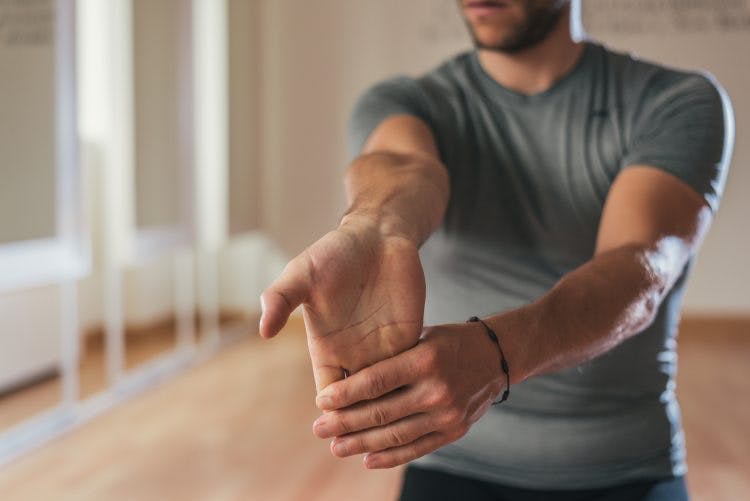
- Overall, hand therapy exercise is the best treatment for stiff hands caused by spasticity.
- Exercise will help rewire the brain and reduce the spasticity long-term. Supplementary treatments like Botox and hand splints can help boost the process.
- Performing stretching exercises daily.
- Prolonged stretching can make muscles longer, helping to decrease spasticity and prevent contracture.
- Splinting, casting, and bracing.
- Prolonged passive muscle stretching is a common treatment for people with spasticity .
- Sustained passive muscle stretching for a long duration improves the range of movements, and reduces the spasticity of muscles
Ice therapy :
- Local application of cold is used clinically to diminish the resistance of spastic muscle to rapid stretching and to decrease or abolish clonus.
- Cold can be applied to the body in three different ways: immersing in cold water, rubbing with ice cubes or ice packs, or using evaporative sprays such as ethyl chloride
Functional Hand Exercise :
- One technique for encouraging use of the affected arm is called constraint-induced movement therapy (CIMT).
- It involves restricting use of the unaffected hand for several hours a day by putting a mitt on it and performing tasks over and over with the affected arm.
Hand -Strengthening Exercises :
- It was expressed to me that this would lead to increased spasticity, exaggerated abnormal movement patterns, and possibly pain.
- In the past, there has been some controversy about strength training for the arm and hand after a stroke.
- It was thought that strengthening spastic muscles might do more harm than good.
- Now research indicates that strengthening spastic muscles can even reduce spasticity.
Hand passive exercise :
- Hand flexion & extension
- Elbow flexion & extension , medial & lateral rotation and supination & pronation
- Wrist flexion & extension
- finger flexion & extension
Level 1: Gentle Hand Exercises :
- Palm Up and Down. For this therapeutic hand exercise, place your hand palm-down on a table.
- Wrist Bend Movement. For the next exercise, gently bring movement into the wrist.
- Wrist Side Movement.
- Rolling Movement.
- Wrist Curl.
- Grip and Release.
- Pen Spin.
- Coin Drop.
Level 2: Moderate Hand Exercises :
Rolling Movement :
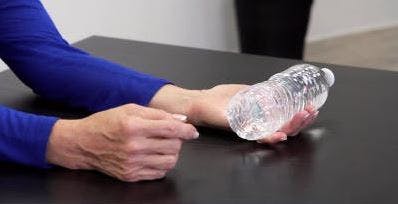
- For this slightly advanced hand exercise, place a water bottle in your affected hand. Keep your hand and fingers relaxed.
- Curl your fingers and grasp the water bottle in your hand.
- Then release back down.
- Repeat the movement by continuing to open and close your fingers slowly so your brain has time to recognize and retrain the motion.
Grip and Release :
- Place a pen on one side of the table.
- Grip it as best you can with your affected fingers. Slide the pen across the table, and release.
Level 3: Challenging Hand Exercises :
Pen Spin :
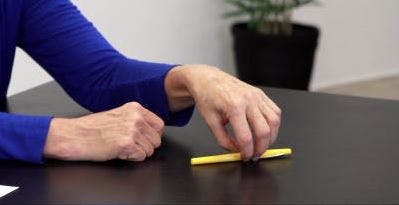
- For this advanced hand exercise, place the pen on the table and use your thumb and fingers to spin it.
- Stabilize your elbow on the table to prevent the use of your shoulder during this movement.
- Focus on isolating your thumb and fingers.
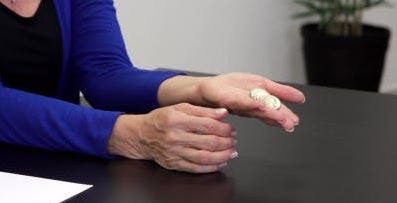

Coin Drop :
- This advanced hand exercise is comprised of 3 movements.
- Start by placing 8 quarters in a row in the palm of your affected hand.
- Use your thumb to move one quarter to grip with your index finger and thumb.
- Then, place the quarter onto the table while keeping the other quarters in your hand using your other fingers.
- This is called in hand manipulation and translation skills.

Finger Curl :
- For this last hand exercise, try to touch each fingertip to your thumb.
- Pinch and release starting with your index finger, moving to your middle finger, then ring finger, and finally your little finger.

